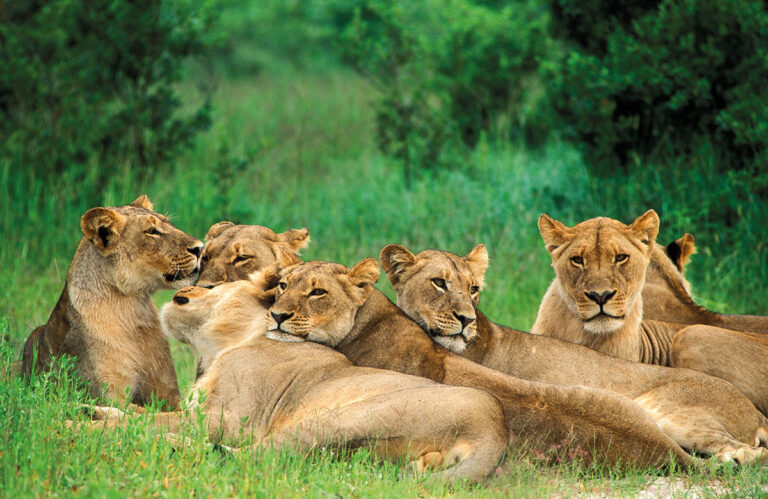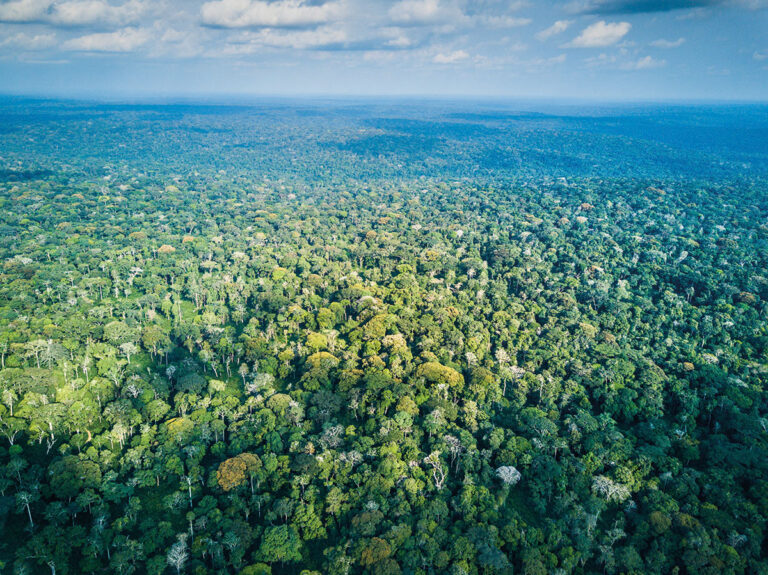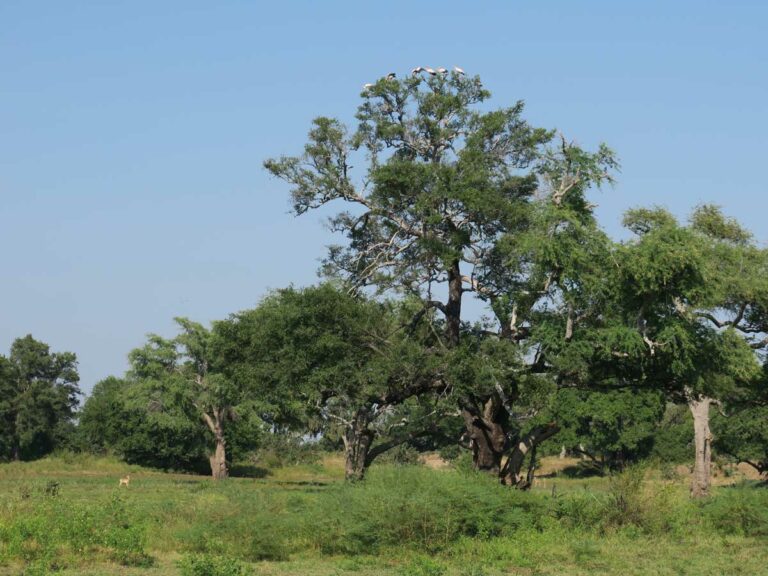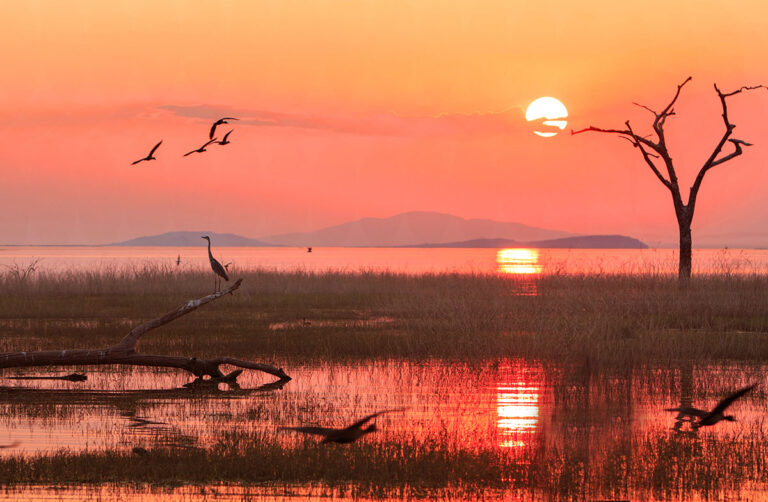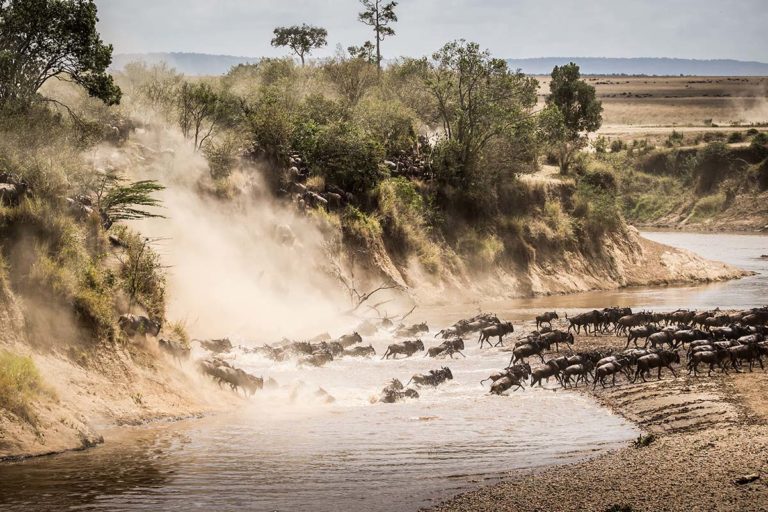Scene but not herd
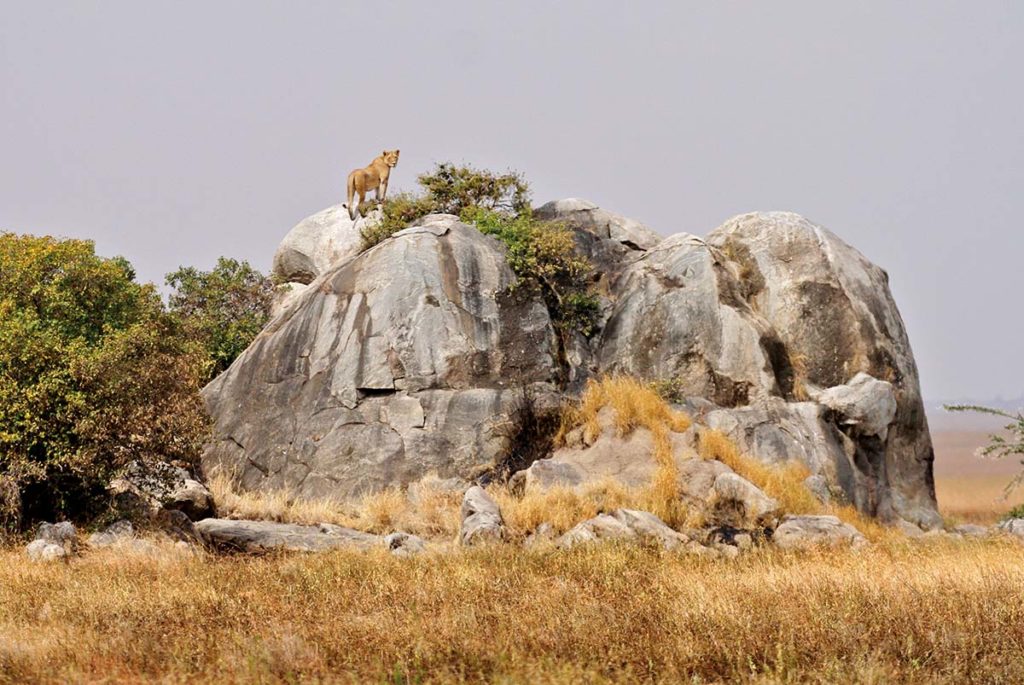
The Serengeti’s Great Migration fully justifies the park’s reputation as one of the world’s finest. But the herds are not everything. Visitors can enjoy exceptional wildlife encounters in any season — some at unexpectedly close quarters! Words and pictures by Mike Unwin, first published in Travel Africa Issue 96, 2022
You should have been here two months ago,” says Angel, standing on the deck, as I gawp at the view. “It was wildebeest, wildebeest, wildebeest, as far as you could see.” She sweeps her hand with a flourish across the panorama; a fitting stage-set for the celebrated great migration. “Now, they’re all gone.”
I drop my bag and try to take it in. My gaze tracks past the foreground waterhole, down the acacia-studded hillside, over a snaking watercourse and out onto the vast golden plain beyond. Sculpted kopjes sail the distant horizon like stragglers from the Spanish Armada. The sheer scale is hard to process: it’s the Serengeti as you’d always dreamed it. My host is right, though: there’s not a wildebeest to be seen.
Angel Namshali is the irrepressible manager of Dunia Camp, located in the southern sector of Africa’s — arguably, the world’s — most famous national park. It’s July and, with the migrating herds now far to the north, this is Dunia’s quiet season. As we check in, other guests are checking out; heading to the airstrip for a transfer north to the Mara River, where all the action is currently kicking off.
This is fine by me. Wishing no disrespect to wildebeest, I’m happy to avoid the crowds — both of grazing herbivores and of camera-toting humans. I’m here with my wife and daughter, and our goal is not so much to tick off a bucket list but rather just to immerse ourselves in this special place and see what it brings.
Dunia is certainly special. Perhaps it is the unique, all-female team (“I believe that women can do anything just as well as any man,” says Angel). Perhaps it is the secluded location — the camp is smuggled into woodland at the base of a long, rugged ridge, away from the drama of the open plains yet with easy access to it. Either way, the place has an alluring vibe; a sense that we lucky few are in on something secret.
If we think we’ll be avoiding the action, however, we have another thing coming. After dinner, as we sit around the fire and discuss the itinerary, the low moans of a nearby lion start up over the crackle of flames. It sounds alarmingly close. Angel explains that the local pride brought down a buffalo in camp two days ago and have since stuck around, returning to feed after dark. “Where, exactly?” I ask, as casually as I can manage. “Oh, near tent number one”, she replies, cheerfully. “Your tent”.
That night turns out to be the most nerve-jangling I have ever spent on safari. With the lights out, and tent flaps securely zipped, I lie awake, ears straining the darkness for sound. Crickets chirrup. A distant hyena whoops. A white-faced owl utters its bubbling hoot. Then I hear something else: the rhythmic swish-swish of movement through the long grass. Whatever it is, it’s coming right up to the tent.
My daughter has heard it, too. “What’s that?” she whispers. The answer is unambiguous: a thunderous roar, erupting from just the other side of our canvas.
We cower into the sheets as the monstrous sound rises again and again, stupefyingly loud — like the earth heaving up its innards — then finally peters out in a shudder of husky exhalations.
So much for ‘quiet season’. We barely sleep that night. Between the bouts of roaring — at times, two males going at it in tandem — we hear the rumbling, snarling, tearing of flesh and splintering of bone as the entire pride returns to feed. In the blackness of the small hours, it is viscerally loud, as though the lions are inside our tent.

By first light, things have fallen quiet. I creep out onto our deck, just in time to watch the pride slinking away; tawny shoulders see-sawing through long grass; amber eyes fixing us in backward glances. So no, it wasn’t all a dream.
“There are always animals around,” Angel assures us at breakfast, when we regale her with the night’s adventures. “But not often lions. You were very lucky.” She explains how just yesterday afternoon she had to commandeer a vehicle to drive away elephants from the camp’s water tank.
Lucky, terrifying, whatever — that first night’s drama has somehow relieved the pressure. Now we can relax into our stay knowing that we’ve already hit the jackpot. The Serengeti has performed. Whatever comes next can only be a bonus.
Our explorations begin with the camp’s immediate surroundings. The rocky, wooded terrain reminds me more of South Africa’s eastern Kruger Park than the ‘open plains’ Serengeti of the brochures. Winding slowly along private tracks, we find impala browsing the treeline — reinforcing that Kruger feel — and small groups of elephant moving through the thorn scrub. With no pressure for big cat sightings, we can take our time over small stuff: a diminutive Kirk’s dik-dik anointing grass-heads with its pre-orbital scent gland; a Von der Decken’s hornbill beating a plump caterpillar against a branch to remove every last poisonous hair.
As we continue, each new piece of the Serengeti habitat jigsaw offers its rewards. Along a tree-lined watercourse we find hippos dozing in the deeper pools and vervet monkeys squabbling over childcare in the branches above. At an exposed soda lake, we watch flamingos sieving the salty soup while smaller waders work the shoreline. And, circumnavigating one of those kopje galleons, we find rock hyraxes and agamas sunning themselves on the fissured granite, while tip-toed klipspringers stare down from the sculpted pinnacles.
The open plains bring more vehicles. It’s hardly surprising: this is Serengeti Central, after all. But it’s nothing too intrusive. Now the chaos of the Great Migration has passed, the land appears to be breathing a sigh of relief. What’s more, the wildebeest haven’t taken all the grazers with them: we find numerous gazelles — both Grant’s and Thomson’s — plus scatterings of zebra, topi and eland. A wealth of birds also pick over the trampled sward: striding kori bustards; elegant Temminck’s coursers; a yellow-throated sandgrouse leading her fluffy little brood.
And — before you ask — we certainly don’t miss out on the Serengeti’s fabled big cats. When the wildebeest herds move on, the predators must hold their territories, revising their menus accordingly. Out on the plains, we follow two lithe cheetah brothers, who perch picturesquely on a termite mound to scan the sea of grass. In the Seronera Valley, we join a cluster of vehicles to admire a lounging leopard that has secured an even better view from the sturdy limb of a fig tree. And not a drive passes without us finding more lions: slumped around a kill; draped over kopjes; attempting — fruitlessly — to ambush a zebra.
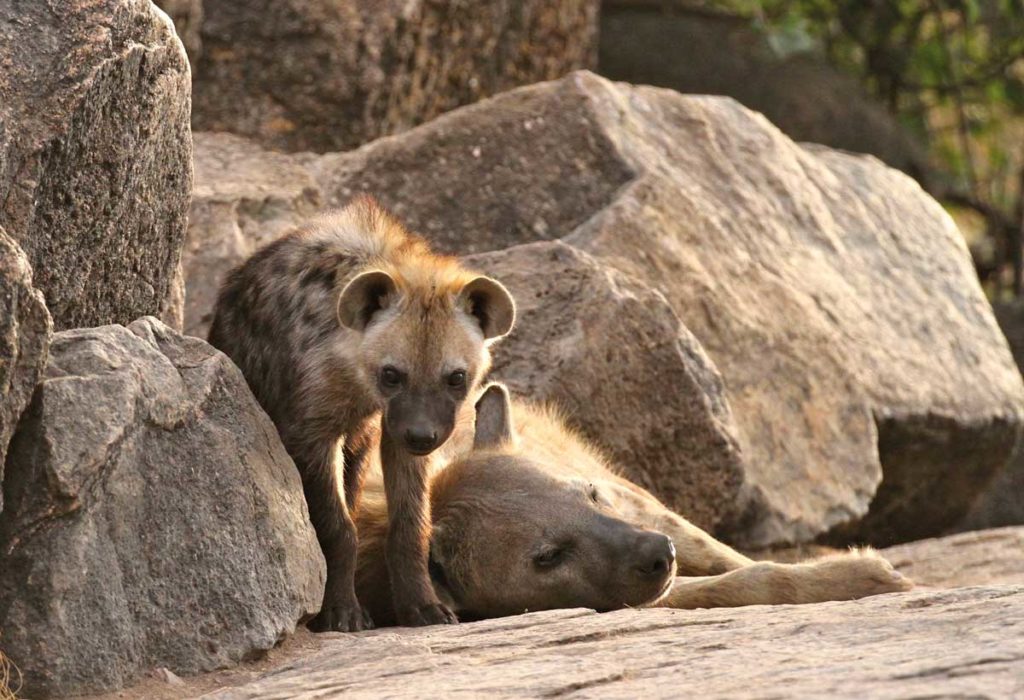
Spotted hyenas also do their bit to steal the show. Winding back towards camp one afternoon, we find ourselves tailing a lone adult, who leads us to a cluster of rocks where the clan has its den. As the shadows lengthen, these compelling animals emerge to check us out — adults, pups and adolescents. Reassured that we’re harmless, they begin to relax and interact, sniffing, giggling and pursuing one another around their playground. The noises alone make it worth the trip.
That evening brings a surprise. Instead of completing our journey home, we divert to another kopje — a smooth dome known as ‘chipati rock’ — where we clamber up the warm granite to find Angel and her team awaiting us with sundowners. Perched on our stone citadel, drinks in hand, we watch as a distant line of giraffes troops across the horizon and the great red orb sinks behind the hills. This is magic beyond fiction.
The final morning brings an early transfer to the airstrip. Like the herds, we’re moving on. As we wind out along the now-familiar track, my daughter and I tot up a mental list of our Serengeti sightings. The numbers are impressive: all the big five, including a single rare black rhino; four species of cat, including a chance encounter with a serval; an amazing ten species of antelope. In fact, there’s been only one notable absentee.
“What’s that?” calls my wife, interrupting the finger-counting. We stop, peering at a dark animal behind a bush. “Buffalo?” I venture. It emerges onto the track, followed by three more. There’s no mistaking those front-heavy profiles; the long noses, shaggy manes, handle-bar horns and fly-whisk tails. Wildebeest! In a sudden panic, the lugubrious quartet take off, galloping away through the thickets and out of sight.
You’ve missed the boat, guys, I think. Chill out. Enjoy the space. The others will be back soon enough.
Mike Unwin and family visited Dunia Camp with Steppes Travel
If you’d like to subscribe to Travel Africa magazine, click here to see all your options.
Other recent articles
Rediscovering Zimbabwe
The green heart: trees of life
Where to look?
Zimbabwe highlights
Circuit breaks
25 Reasons to visit Kenya
Subscribe
Never miss an issue of Travel Africa
To ensure you get your regular Africa fix, subscribe to have each issue of Travel Africa delivered directly to you as soon as it is published (four times a year). Choose from print+digital or digital-only options, to suit your preferred reading style. Renewals and gift options are also available.
Join our Shamwari gnusletter
Sign up to receive additional content, news and travel tips by email. Your address will be used only for this purpose and you can unsubscribe at any time.
By using this form you agree that you have read our Privacy Policy

